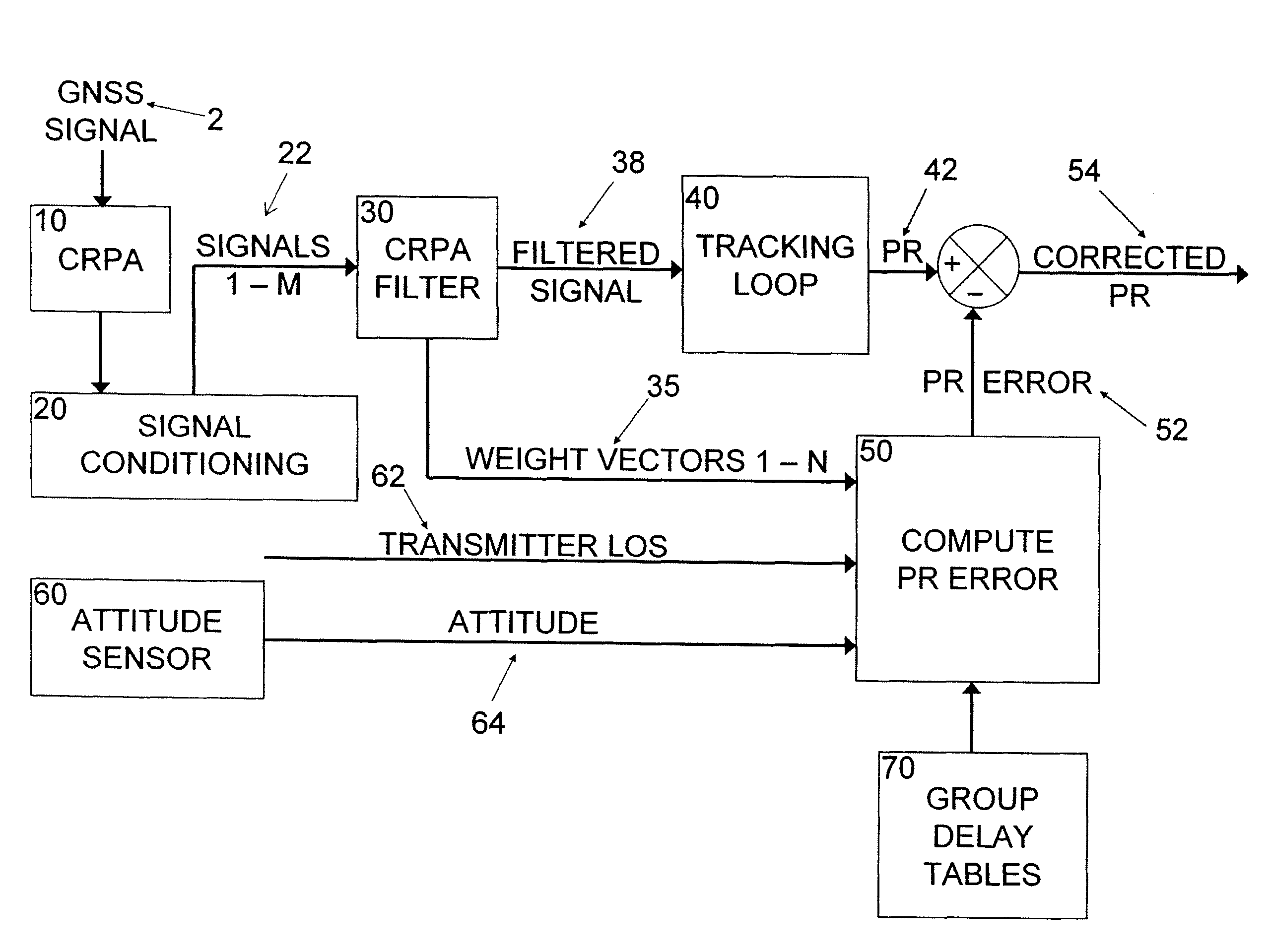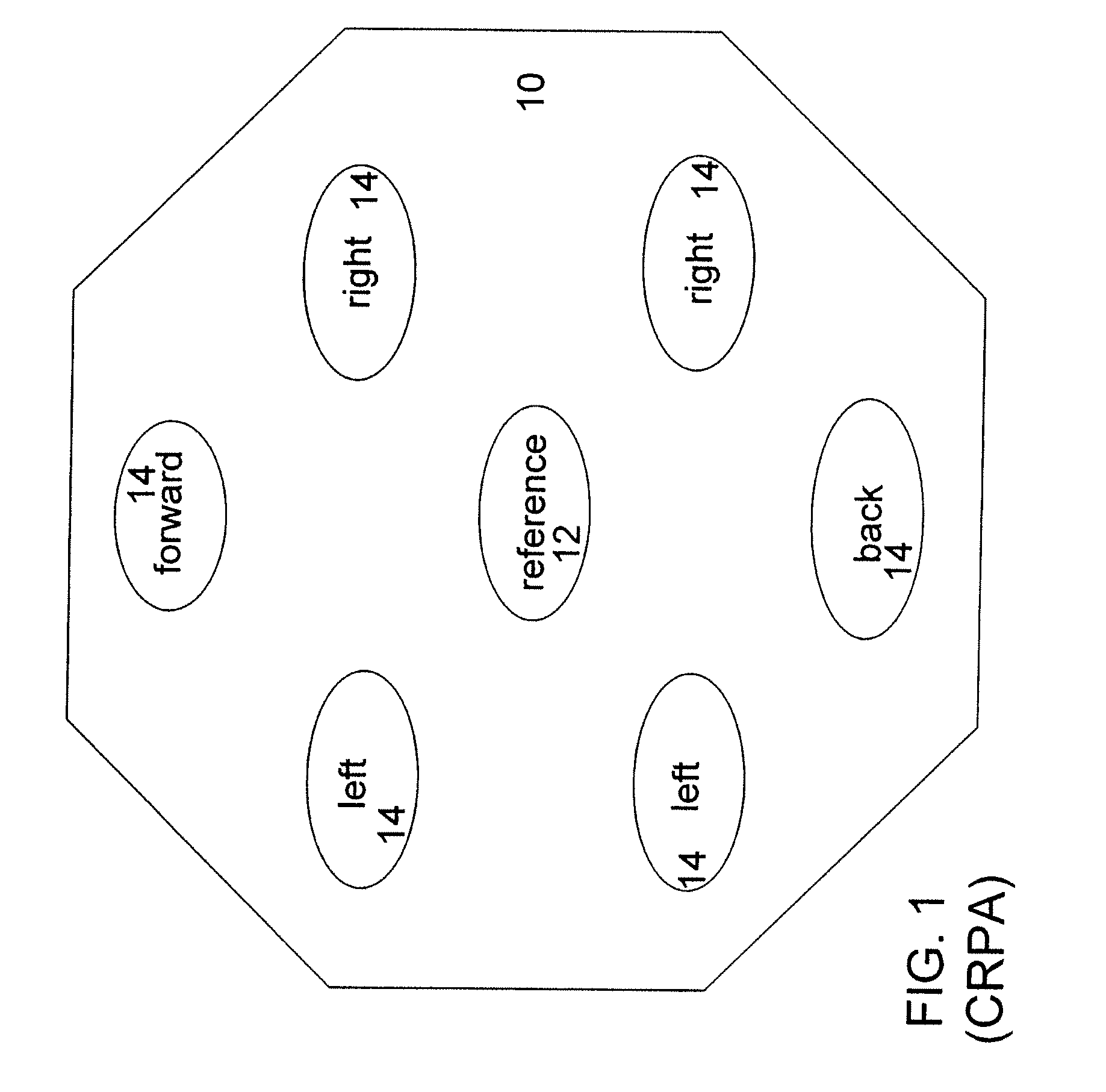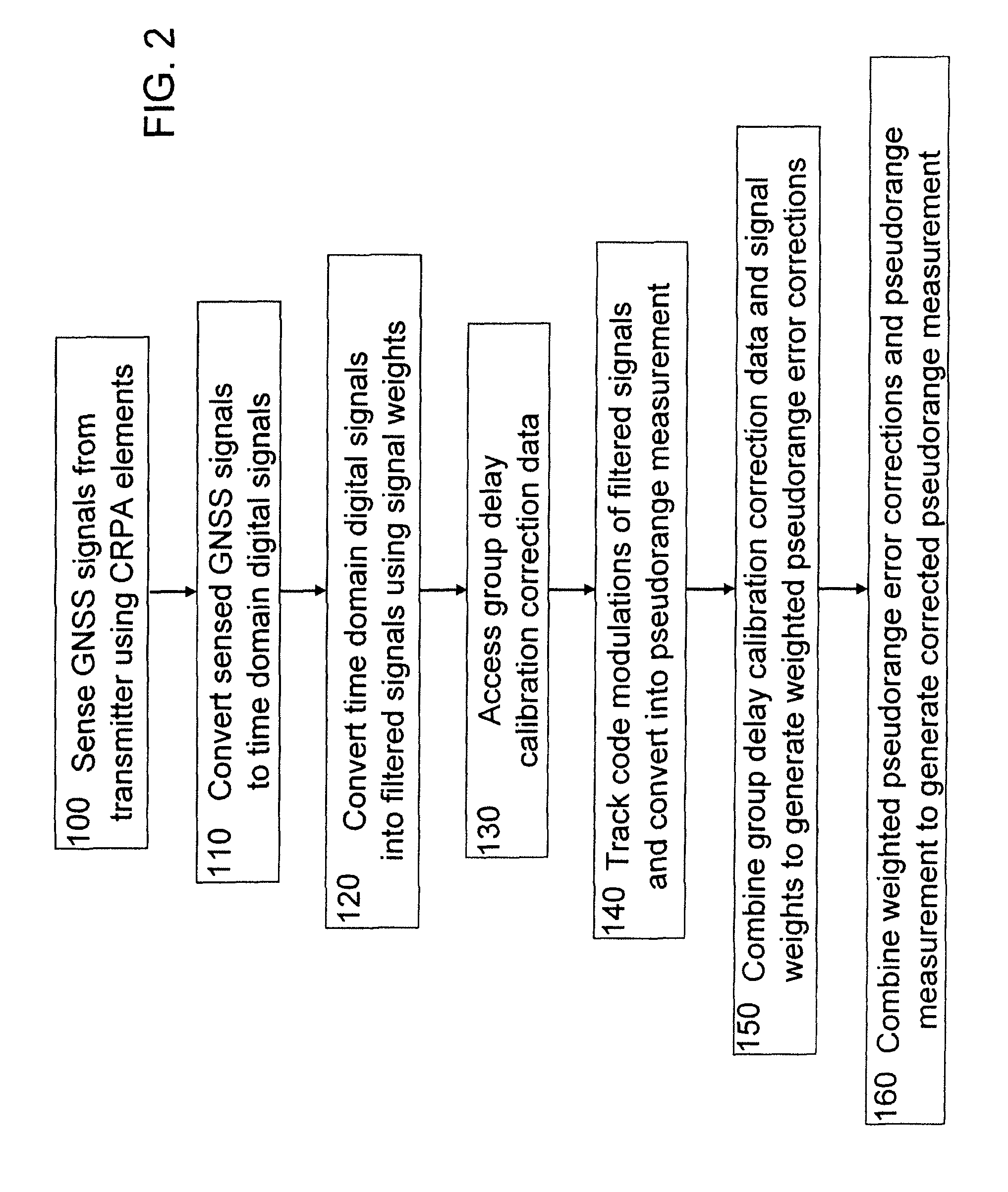System and method for correcting global navigation satellite system pseudorange measurements in receivers having controlled reception pattern antennas
a global navigation satellite and pseudo-range technology, applied in the field of global navigation satellite systems, can solve problems such as common range error, range error, and other effects that contribute to range measurement error still remain
- Summary
- Abstract
- Description
- Claims
- Application Information
AI Technical Summary
Benefits of technology
Problems solved by technology
Method used
Image
Examples
embodiment
Frequency-Independent Embodiment
[0060]As a first approximation, assume there is no jamming or the jamming is broadband noise that has a constant power spectral density in the GNSS band. In either case, ABF will compute the same weight vector in every frequency bin if the receiver's thermal noise is white. If the weight vector is independent of frequency, ABF and CBF may be modeled in the time domain and their DFT 32 and inverse DFT 36 operations may be ignored.
[0061]The complex signal received by the CRPA reference element 12 is u(t)=P(t)ei(ωt+φ), where P is the message code (±1), ω is the carrier frequency, and φ is the carrier phase. The signal received by the mth antenna element is time-shifted by Δtm relative to the reference element (|Δtm|m and shift its phase by θm:
u(t+Δtm−τm)=P(t+Δtm−τm)ei(ωt+ωΔtm−ωτm+φ+θm)
[0062]The antenna's contribution to θm is sensitive enough to the signal direction that a “sky map” (a table of phase versus azimuth and elevation) is needed to compute it....
PUM
 Login to View More
Login to View More Abstract
Description
Claims
Application Information
 Login to View More
Login to View More - R&D
- Intellectual Property
- Life Sciences
- Materials
- Tech Scout
- Unparalleled Data Quality
- Higher Quality Content
- 60% Fewer Hallucinations
Browse by: Latest US Patents, China's latest patents, Technical Efficacy Thesaurus, Application Domain, Technology Topic, Popular Technical Reports.
© 2025 PatSnap. All rights reserved.Legal|Privacy policy|Modern Slavery Act Transparency Statement|Sitemap|About US| Contact US: help@patsnap.com



